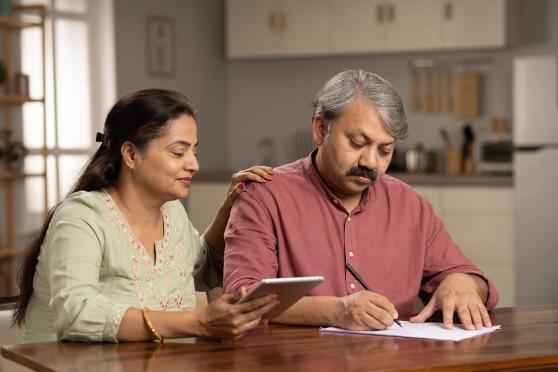Why checking in with the doctor is important for kids with attention deficit hyperactivity disorder (ADHD)
Getting a diagnosis can change things, but it’s the first step to managing this condition

You might feel relieved when you learn your child has attention deficit hyperactivity disorder (ADHD). Finally, you understand why they struggle. It’s a condition that can rob a child of the ability to succeed in school and maintain friendships. Undiagnosed, ADHD can leave your family in turmoil.
That diagnosis can mark a huge turning point. But it’s only the beginning of your child’s journey in managing their condition. The next step is working with your child's doctor to find the right mix of medication and behavior-management therapy. A combination of the two works better than either one alone. You’ll need to attend follow-up appointments with your child’s doctor for best results.
With the right medication and dosage, children diagnosed with ADHD show great improvement. That's why it is important for children to visit the doctor within 30 days after they begin taking ADHD medication.
“For children who are helped by these drugs, it often takes time to hone in on the medication and dose that can make a positive difference,” says Nicole Beurkens, Ph.D., founder and director of Horizons Developmental Resource Center in Caledonia, Michigan. And if the prescribed medication isn’t working or the symptoms are getting worse? “They need to be seen in order to safely discontinue the medication and find other solutions.”
As your family goes through this process, it’s helpful to remember that you are not alone. About 6.1 million children in the United States have ADHD, according to the Centers for Disease Control and Prevention (CDC). About two-thirds of children ages 6 to 17 with ADHD take medication for it. Experts recommend that children under age 6 try behavioral therapy before starting medication.
Like most medications, stimulants can cause side effects. This is another reason not to miss follow-up doctor visits. Side effects include trouble sleeping, loss of appetite, weight loss, and social withdrawal, according to the American Academy of Pediatrics. Most of these side effects are mild and tend to fade over time. Some children have more serious or long-lasting side effects than others.
If your child has side effects, their doctor can help by changing the dosage of the medication. They might recommend a different time of day to take the drug or trying a new treatment altogether.
Of course, medication isn’t the only treatment option for kids with ADHD. According to the CDC, children ages 6 to 18 often receive behavior-management training. This can give children with ADHD more structure and positive reinforcement. Behavior management is another topic you’ll explore with your child's doctor at later visits.
One thing that helps many kids is behavioral classroom management. Teachers help children manage their ADHD. They use reward systems or daily report cards to give kids feedback. The system encourages positive behavior, according to the CDC. An added benefit is that teachers can work alongside doctors to help a child with ADHD. Teachers watch the child’s behavior in class (and rate it on a scale) and look for any side effects.
Strategies like these often work best when they’re used alongside medication. About 1 in 3 children who received treatment for ADHD took medication and participated in behavioral training, according to the CDC.
Ultimately, if you and a doctor have determined that medication should be part of your child’s treatment, it’s important to follow every aspect of that plan — especially follow-up care, says Dr. Beurkens. Follow-up visits are important for children recently prescribed ADHD medication. These visits ensure the medication is effective in relieving your child’s symptoms.
“Parents need to do their part by attending scheduled appointments and communicating with health care professionals about the improvements and concerns they’re seeing with their child,” says Dr. Beurkens. “It’s a collaborative effort between the family and the prescriber.”


